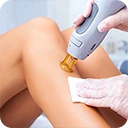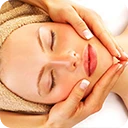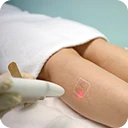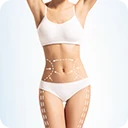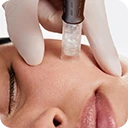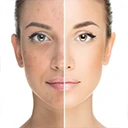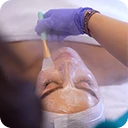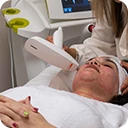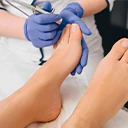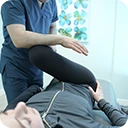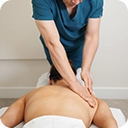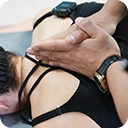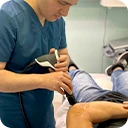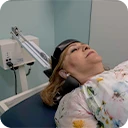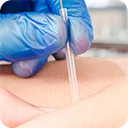Understanding Myofascial Release: The Science Behind the Technique
Fascia is a complex web of connective tissue that envelops every muscle, bone, nerve, and organ in the human body. This intricate network supports structure, maintains alignment, and facilitates smooth movement. When healthy, fascia is flexible and supple, but factors such as injury, repetitive stress, poor posture, or inactivity can cause it to become tight or restricted. These so-called myofascial restrictions may lead to discomfort, reduced mobility, and even chronic pain.
Myofascial release (MFR) is a specialized manual therapy technique designed to target these restrictions. It involves applying gentle, sustained pressure and stretching to affected areas, encouraging the fascia to relax and lengthen. Unlike general massage, which often focuses on muscles themselves, myofascial release emphasizes the connective tissue, seeking to restore its normal function and promote fluid movement throughout the body.
Science supports the effectiveness of myofascial release. Research indicates that this technique can reduce pain, enhance range of motion, and improve overall body mechanics. Through hands-on manipulation, practitioners can break up adhesions, increase circulation, and facilitate the body’s natural healing processes. For those seeking holistic health solutions, understanding the science behind myofascial release empowers both professionals and wellness enthusiasts to make informed choices about their care and movement strategies.
How Myofascial Release Improves Pain, Posture, and Movement
Chronic pain and restricted movement often have roots deeper than muscle tension—they’re frequently tied to the fascia. Myofascial restrictions can develop after injuries, repetitive motions, or even from prolonged periods of poor posture, leading to persistent aches and limited mobility. Myofascial release targets these underlying issues, providing relief that’s both profound and lasting.
One of the most remarkable benefits of myofascial release is its ability to alleviate pain. By gently stretching and releasing the fascia, pressure on nerves and muscles diminishes, reducing pain in common trouble areas like the lower back, neck, and shoulders. This approach is effective not only for chronic conditions but also for acute injuries, helping individuals recover more quickly and thoroughly.
Improved posture is another significant outcome. When fascia becomes restricted, it can pull the body out of alignment, resulting in slouching or compensatory movements. Myofascial release restores balance by addressing these tight areas, allowing the body to realign naturally and encouraging healthier movement patterns.
Increased flexibility and range of motion are also key advantages. By freeing up fascial adhesions, myofascial release enables joints and muscles to move more freely, supporting everything from athletic performance to daily activities. Additionally, by reducing overall tension, this technique helps prevent future injuries, making it a valuable addition to any wellness or fitness routine. Whether you’re a professional seeking better function for your clients or an individual striving for pain-free living, myofascial release offers tangible, science-backed results.
Essential Hands-On Techniques for Effective Myofascial Release
Effective myofascial release can be performed using a variety of hands-on techniques, each tailored to the individual’s needs and the specific area of restriction. Two main approaches are commonly used: direct and indirect myofascial release. Direct techniques involve applying firm, sustained pressure directly to the restricted fascia, often using the practitioner’s hands or elbows. Indirect techniques, on the other hand, use gentle stretch and pressure, allowing the fascia to “unwind” at its own pace. Both methods aim to restore fascial health, but the choice depends on the client’s comfort and specific condition.
For those interested in self-care, self-myofascial release (SMR) is an accessible and effective method. Tools such as foam rollers, massage balls, or even a tennis ball can be used to target tight areas. Rolling slowly over muscle groups—like the calves, thighs, or back—while pausing on tender spots helps release adhesions and increase circulation. It’s important to move gradually and listen to your body, avoiding excessive pressure or rolling over joints.
Professional practitioners often use advanced techniques, including cross-hand stretches, trigger point release, or instrument-assisted methods. These approaches can provide deeper, more targeted relief, especially for complex or long-standing issues.
Regardless of the technique, safety is paramount. Always avoid bony areas, open wounds, or areas of acute inflammation. If pain intensifies during a session, it’s crucial to stop and consult a professional. By understanding and applying these hands-on techniques, both individuals and healthcare professionals can harness the power of myofascial release for enhanced mobility and well-being.
Incorporating Myofascial Release into Your Wellness Routine
Incorporating myofascial release into your regular wellness routine can yield significant benefits for pain management, posture, and movement. For most individuals, 10-20 minutes of self-myofascial release a few times a week is enough to notice improvements. Consistency is key—a regular schedule allows the fascia to adapt and heal gradually, maximizing long-term benefits.
Pairing myofascial release with other wellness practices can enhance its effectiveness. For example, combining it with stretching or yoga can further increase flexibility and relaxation, while integrating it into a physiotherapy plan may accelerate rehabilitation. The synergy between myofascial release and other modalities supports a holistic approach to health, addressing both the symptoms and root causes of discomfort.
Personalization is essential. Your routine should reflect your unique lifestyle, activity level, and specific areas of concern. Start by identifying tight or painful regions, then select appropriate techniques—using tools or hands-on methods—to target those spots. Mindful practice is important: focus on your breathing and body sensations, and avoid rushing through the process.
Tracking your progress helps fine-tune your approach. Keep a simple log of sessions, noting any changes in pain, flexibility, or posture. This feedback allows you to adjust techniques or frequency as needed, ensuring that your routine continues to support your evolving wellness goals. With dedication and attention, myofascial release can become a cornerstone of your journey toward better health and movement.
Achieving Lasting Results: Tips for Continued Mobility and Comfort
Achieving and maintaining optimal mobility and comfort requires a proactive approach. Myofascial release is most effective when used as part of regular maintenance—not just in response to pain or injury. Ongoing attention to your fascia keeps restrictions from developing and supports lasting improvements in posture and movement.
In addition to myofascial release, adopting a holistic lifestyle amplifies its benefits. Staying active through movement practices such as walking, swimming, or yoga helps keep the fascia supple and responsive. Practicing good posture at work and home reduces unnecessary strain, preventing new restrictions from forming. Nutrition and hydration also play a role; well-hydrated fascia is more pliable and less prone to tightness.
There are times when self-care isn’t enough. Persistent pain, recurring injuries, or complex issues may require the expertise of a trained professional. Seeking guidance ensures you receive tailored techniques and support, reducing the risk of further injury and promoting faster recovery.
Finally, it’s important to set realistic expectations. Progress can be gradual, especially for chronic or long-standing issues. Celebrate small improvements—greater comfort, increased range of motion, or better posture—as these build a foundation for lasting health. With regular practice, mindful movement, and a commitment to wellness, myofascial release can help you achieve a more comfortable, mobile, and vibrant life.







